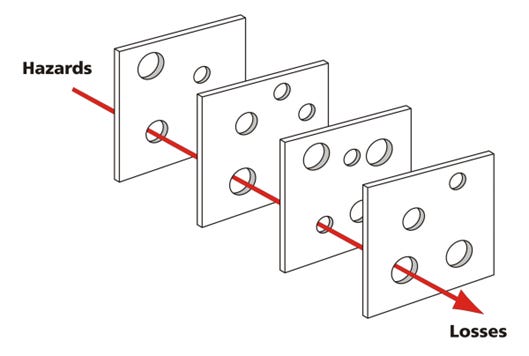Vulnerability is defined as ‘the characteristics and circumstances of a country’s environment and people, systems or assets that make it susceptible to the damaging effect of a hazard event’ (UNISDR).
Vulnerability is present in all nations and in all communities, at all scales, and can change over time to a greater or lesser degree. The Pressure and Release (PAR) model can be used to summarise the main factors contributing to high vulnerability.
Figure 1. The PAR model
To the left of the diagram are the factors that may progress to high vulnerability:
1. The underlying (ROOT) causes of poverty
• limited access to resources and appropriate power structures
• inadequate political systems and governance
• weak economic systems.
2. Dynamic pressures
The lack of local:
• institutions of quality
• education and training
• appropriate skills
• investments
• markets
• press freedom
• clinical standards.
And the macro-forces of:
• population expansion
• rising levels of urbanisation
• environmental degradation
• the need to pay off debts.
3. Unsafe conditions
A fragile physical environment:
• dangerous locations
• dangerous buildings and infrastructure.
A fragile local economy:
• putting livelihoods at risk
• low-income levels and widespread poverty
• lack of local governance
• lack of disaster preparedness
• high prevalence of endemic diseases.
To the right of the diagram are the natural hazard trigger events:
• Earthquake, volcanic eruption
• High winds/cyclones
• Flooding, drought
• Landslide, wildfire
• Virus/pests
• War/civil conflict; technological accidents.
The combination of the left- and right-hand sides leads to the occurrence of a disaster, summarised as:
Disaster risk = Vulnerability x hazard
Vulnerability can also be examined through different paradigms. A paradigm is a way of viewing things; a kind of model. There are two very different paradigms in the study of disasters.
• The dominant paradigm emphasises an informed choice to disaster mitigation and the capacity for engineering and scientific interventions to address a potential disaster. It is top-down, resource-heavy, and has dominated Western approaches to managing disasters in the 20th century. In other words, something can always be done to reduce vulnerability, if there is a political will, and the money.
• The alternative paradigm views disasters as inevitable consequences of socio-economic and political processes that create vulnerability. It advocates bottom-up mitigation strategies and the adoption of policies to reduce poverty. This involves deep-seated policies that cut across a society, and do not totally depend on financial input.
The Swiss Cheese model
An alternative way to look at vulnerability is through the Swiss Cheese model. This states that a disaster occurs because of a series of coincidental factors and processes, some physical and some human. A disaster can be linked to a single physical natural event, but there is also a range of other human contexts (the ‘holes’) that influence the hazard, that increase (or indeed decrease) vulnerability.
A hazard becomes a disaster when several ‘holes’ line up (a trajectory of accident opportunity), which creates the conditions for loss of life, property, and livelihood.





